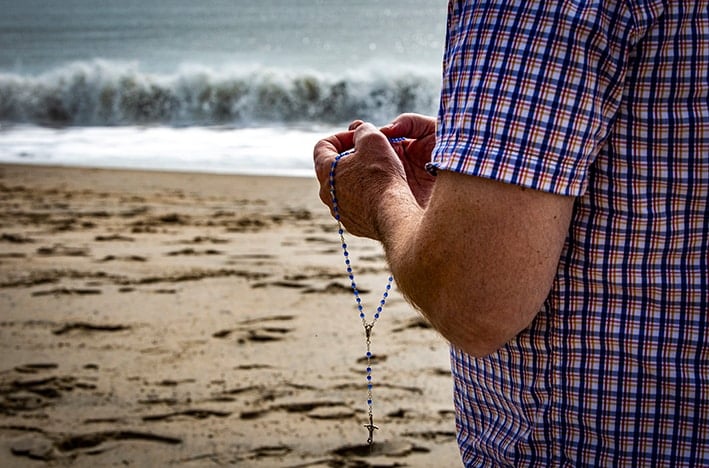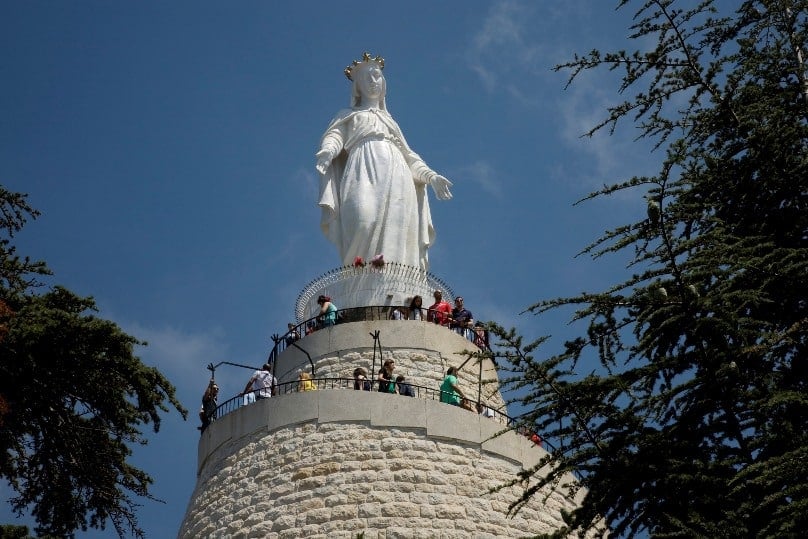
Continuing with The Catholic Weekly’s readers exciting new addition to its line up of award-winning columns this week.
Titled Melto D’moronoyo (From Syriac it translates literally as ‘Maronite’s word’), this regular feature offers contributions from a variety of Maronite Catholic writers on topics relating to life, faith, spirituality and church news.
Why Maronites love praying with Mary
Devotion to Our Lady and praying her Rosary are non-negotiable aspects of the Maronite way
By Fr Danny Nouh
In a year that most of us have often wished away thanks to the pandemic and its impacts, I want to pause and reflect on a beautiful juncture in our spiritual journey. We have just arrived at a month that every year I wish would never end; the month of the Most Holy Rosary, the month of October.
My prayer is that the challenges we have faced this year have led us to the Rosary more and have helped us to come to understand the graces that we can receive through this devotion.
We Maronites are predominantly a people of faith and prayer. For the Maronite Church, the Liturgy is our primary source of spirituality, inspiration and theology.
Whereas the Western Church relies heavily on the writings of the Great Fathers who explain to us the Scriptural, Traditional and Dogmatic understanding of our faith, the Maronites take a spiritual understanding inspired by the prayers and hymns of saints and hermits, the blood of our martyrs and the everyday witness of our mothers and fathers.
This prayerfulness or spirituality has been handed down from Saint Maroun and his disciples through the generations and it stems from the monastic and ascetic life that they lived; this we have adapted without even knowing, in our ordinary, everyday life.
As such the Rosary has naturally become the most important form of prayer after the Divine Liturgy.
While we all know the origins of the rosary are not Maronite, it is said that the Arabic word for the Rosary is believed to have originated in a pagan or Muslim form in the East: “massbahat”. Today we all know it as Massabha (the word for Rosary in Arabic), which simply means to give praise.
It is also said that as early as 1580, the Rosary had made its way to Lebanon and the Maronites were taught this way of prayer. Ever since, we have adopted it as our own, writing reflections on the mysteries, with our priests, bishops, and patriarchs encouraging us to pray it in times of trouble, war, illness and as a communal and family prayer. Through it we reflect on the life of Jesus and His mystery of salvation.
In the villages in Lebanon, they move from one church to another, praying the Rosary and stopping along the way at designated shrines, often permanently set up in front of homes.”
In our traditions, the Rosary always leads us to the procession, which the Maronites adopted as a way to venerate our Lady. The procession or Arabic word Ziyah, which comes from the Aramaic word Zouyoho, in essence means to shift or move from one particular place to another designated place.
In a liturgical sense, it is a group of people walking together, praying and singing hymns so that they can get closer to God.
In the villages in Lebanon, they move from one church to another, praying the Rosary and stopping along the way at designated shrines for Our Lady, often permanently set up in front of homes. Villagers in fact used to try to outdo each other by having the largest and most beautiful shrine for the Blessed Virgin.
The culmination of the procession is with the veneration and blessing through the icon of the Blessed Virgin at the end of the hymn Ya Oum Allah (Oh Mother of God), which has become the unofficial anthem of the Maronites.
On the occasion of the Feast and Sunday of the Most Holy Rosary, all four mysteries – the Joyful, the Luminous, the Sorrowful and the Glorious – are prayed in our homes and in churches.
In the churches, this is usually led by the Marian Sodality Movements, who also lead processions either inside the churches or the surrounding streets, reminiscent of the processions that took place in the villages, in honour of the Mother of God.
I want to encourage everyone to pray the Rosary daily, and especially focus on it during the month of October.

The Rosary is our most valuable companion, providing great comfort on a journey often fatiguing and filled with many trials and difficulties. No matter where we go, and no matter how far or near, the Rosary beads placed around our necks, in our cars and wallets, remind us that Our Lady will always guide us on the journey.
From the father who is praying the Rosary with his children in the car on the way to school, to the mother who kneels down and prays to Our Lady to protect her family, to the grandmother who is focussed on her beads as she makes her way to morning mass, to the family gathered at bedtime taking turns at each decade and with each reflection they make a step further in living the Maronite Marian spirituality and express that the Mother of our Lord, is very much loved and venerated. Her words are echoing throughout the ages, in the heart and the mind saying: Do whatever He (Jesus) tells you (John 2:5).
Related Articles:
